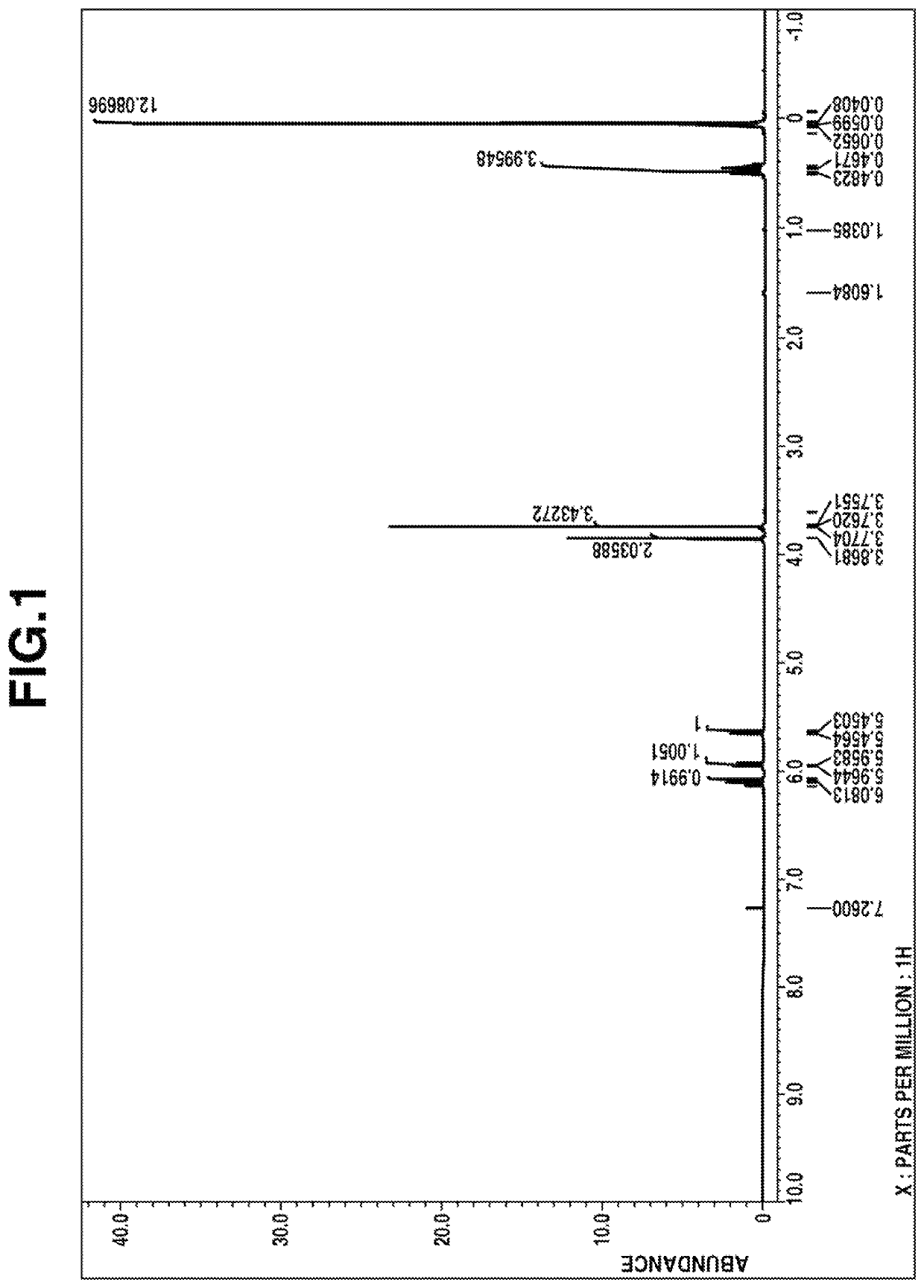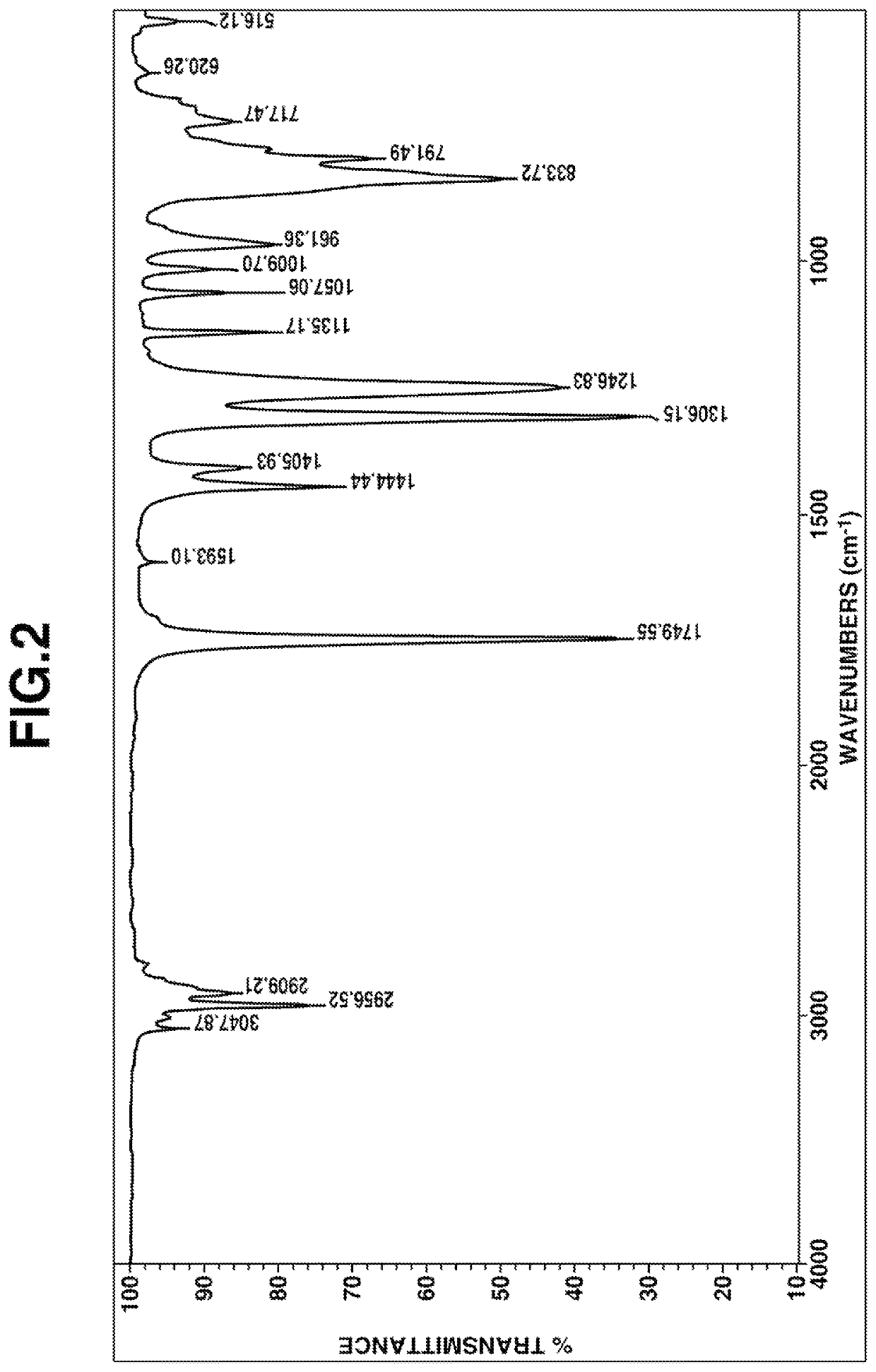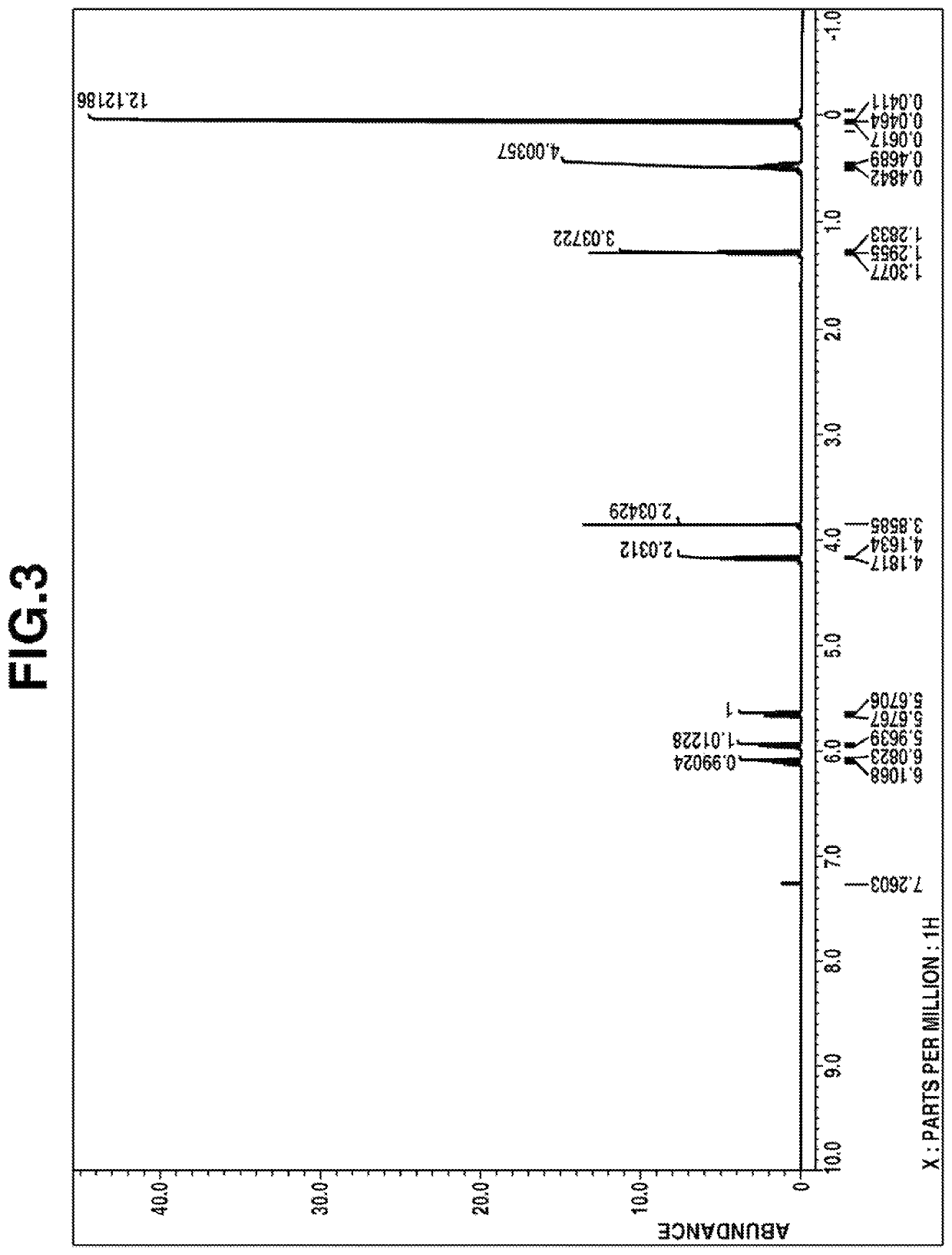Carbonate-containing silane compound and making method
a technology of carbonate and compound, applied in the direction of organic chemistry, chemistry apparatus and processes, electrochemical generators, etc., can solve the problems of increased risk of ignition, vapor pressure rise, lack of chemical stability of electrolyte solutions,
- Summary
- Abstract
- Description
- Claims
- Application Information
AI Technical Summary
Benefits of technology
Problems solved by technology
Method used
Image
Examples
example 1
Synthesis of methyl [dimethyl[2-(dimethylvinylsilyl)ethyl]silyl]methyl Carbonate
[0137]A flask equipped with a stirrer, reflux condenser, dropping funnel and thermometer was charged with 30.4 g (0.15 mol) of dimethyl[2-(dimethylvinylsilyl)ethyl]silylmethanol, 14.2 g (0.18 mol) of pyridine, and 30 ml of toluene, and cooled to 0° C. To the flask, 15.6 g (0.17 mol) of methyl chloroformate was added dropwise over one hour. The contents were warmed up to room temperature and stirred for another 2 hours. Deionized water, 15 ml, was added thereto. The organic layer was separated and distilled, collecting 32.2 g of a fraction at a boiling point of 113° C. / 0.8 kPa.
[0138]This fraction was analyzed by mass, 1H-NMR and IR spectroscopy.
[0139]Mass spectrum: m / z 245, 231, 147, 89, 75, 59
[0140]1H-NMR spectrum (in deuterated chloroform): FIG. 1
[0141]IR spectrum: FIG. 2
[0142]From these data, the compound was identified to be methyl [dimethyl[2-(dimethyl-vinylsilyl)ethyl]silyl]methyl carbonate.
example 2
Synthesis of ethyl [dimethyl[2-(dimethylvinylsilyl)ethyl]silyl]methyl Carbonate
[0143]A flask equipped with a stirrer, reflux condenser, dropping funnel and thermometer was charged with 30.4 g (0.15 mol) of dimethyl[2-(dimethylvinylsilyl)ethyl]silylmethanol, 14.2 g (0.18 mol) of pyridine, and 30 ml of toluene, and cooled to 0° C. To the flask, 17.9 g (0.17 mol) of ethyl chloroformate was added dropwise over one hour. The contents were warmed up to room temperature and stirred for another 2 hours. Deionized water, 15 ml, was added thereto. The organic layer was separated and distilled, collecting 26.8 g of a fraction at a boiling point of 114° C. / 0.6 kPa.
[0144]This fraction was analyzed by mass, 1H-NMR and IR spectroscopy.
[0145]Mass spectrum: m / z 259, 161, 133, 85, 59
[0146]1H-NMR spectrum (in deuterated chloroform): FIG. 3
[0147]IR spectrum: FIG. 4
[0148]From these data, the compound was identified to be ethyl [dimethyl[2-(dimethyl-vinylsilyl)ethyl]silyl]methyl carbonate.
example 3
Synthesis of methyl [dimethyl[(dimethylvinylsilyl)methyl]silyl]methyl Carbonate
[0149]A flask equipped with a stirrer, reflux condenser, dropping funnel and thermometer was charged with 22.6 g (0.12 mol) of dimethyl(dimethylvinylsilylmethyl)silylmethanol, 11.4 g (0.15 mol) of pyridine, and 24 ml of toluene, and cooled to 0° C. To the flask, 12.5 g (0.13 mol) of methyl chloroformate was added dropwise over one hour. The contents were warmed up to room temperature and stirred for another 2 hours. Deionized water, 12 ml, was added thereto. The organic layer was separated and distilled, collecting 18.4 g of a fraction at a boiling point of 102° C. / 0.8 kPa.
[0150]This fraction was analyzed by mass, 1H-NMR and IR spectroscopy.
[0151]Mass spectrum: m / z 245, 187, 157, 117, 73, 59
[0152]1H-NMR spectrum (in deuterated chloroform): FIG. 5
[0153]IR spectrum: FIG. 6
[0154]From these data, the compound was identified to be methyl [dimethyl[(dimethyl-vinylsilyl)methyl]silyl]methyl carbonate.
PUM
| Property | Measurement | Unit |
|---|---|---|
| temperature | aaaaa | aaaaa |
| temperature | aaaaa | aaaaa |
| ideal surface state | aaaaa | aaaaa |
Abstract
Description
Claims
Application Information
 Login to View More
Login to View More - R&D
- Intellectual Property
- Life Sciences
- Materials
- Tech Scout
- Unparalleled Data Quality
- Higher Quality Content
- 60% Fewer Hallucinations
Browse by: Latest US Patents, China's latest patents, Technical Efficacy Thesaurus, Application Domain, Technology Topic, Popular Technical Reports.
© 2025 PatSnap. All rights reserved.Legal|Privacy policy|Modern Slavery Act Transparency Statement|Sitemap|About US| Contact US: help@patsnap.com



